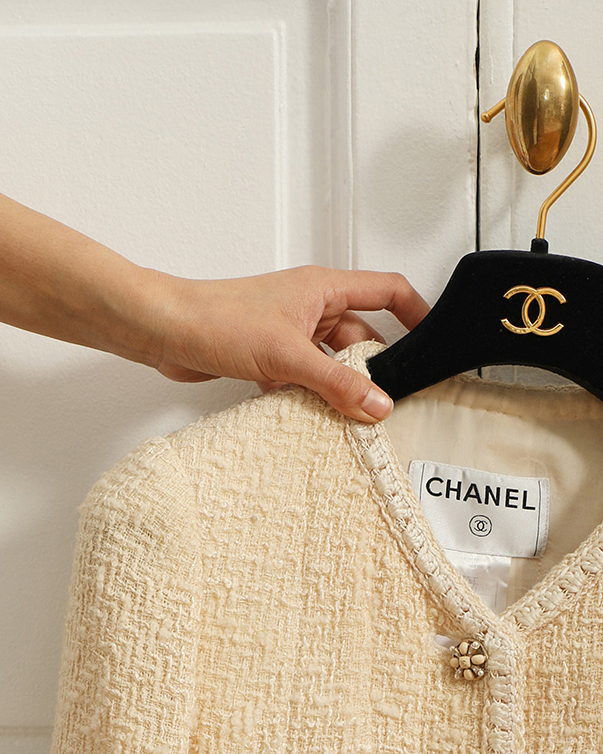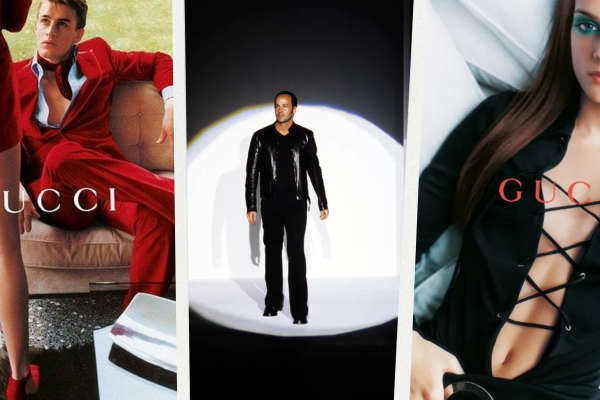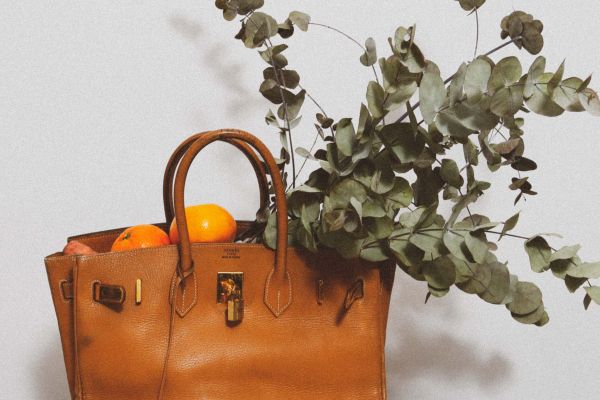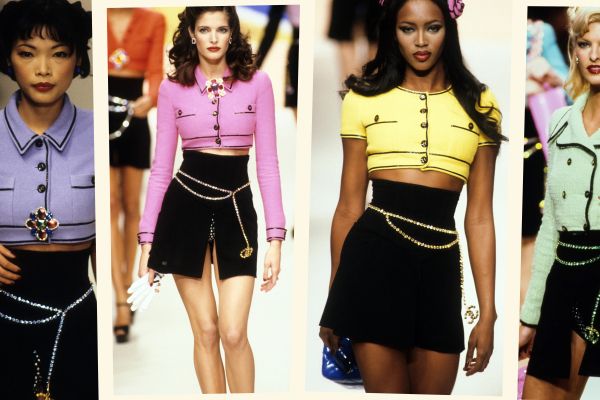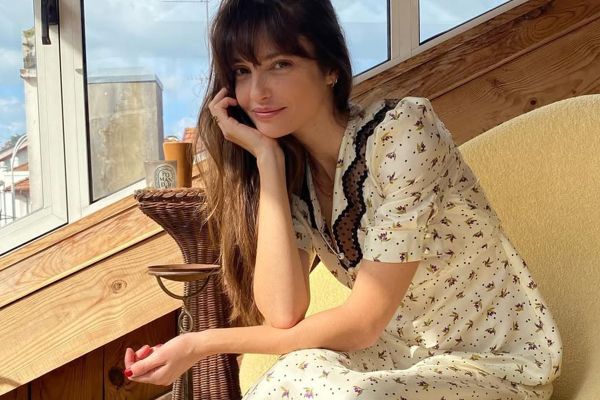The Collector Series: Camille Vergnes
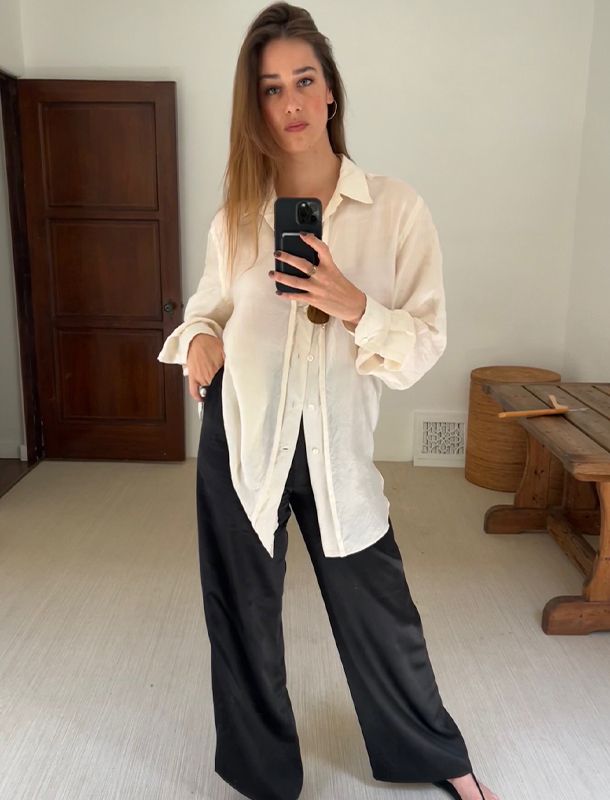
Camille Vergnes can still remember her first vintage find: a Kenzo jungle-print velvet skirt, which she’d bought at a small shop during her lunch break in high school. “The skirt was too big for me, so I was rolling it up around the waist to make it fit,” she says. Looking back, “It was so funny.”
Nevertheless, the purchase incited a lifelong love affair with all things secondhand. Now, the Parisian interior designer outfits herself in antique Boivin jewelry and 1970s Yves Saint Laurent, and similarly decorates her clients’ homes with pre-owned furniture and accents primarily from the 20s and 30s. “I love the hunt,” Vergnes muses. “The piece has to find you, or you have to find the piece, and it’s just a little magical moment. It’s kind of poetic. It’s like falling in love.”
Below, Vergnes discusses her favorite finds and shares her top tips for starting your own vintage collection.
How did you get into interior design?
I think my obsession started when my mother inherited my great grandmother’s farm house. My parents decided to redo everything, but they always had something to change or work on, so I spent my childhood in an undone house. I think my passion comes a little bit from that frustration, but it also gave me the opportunity to wonder: What would I do if it was mine? It stimulated my creativity. Until five years ago, I had been working in luxury hospitality, but I decided to change my life and began to focus on finding clients. Now, I mostly work with furniture from the 1920s, 1930s, and the beginning of the 20th century for the Viennese Secession style.
How would you describe your style?
My style is about mixing. It’s really a dialogue between the different movements I like — a little bit of Viennese Secession, a little bit of Art Deco. When it comes to clothes, my style is feminine and masculine — there’s always an opposition. I wear a lot of silk button ups and high-waisted tailored pants from the 20s, 30s, and 70s. I also love clean, architectural clothes, which is why I like Alaïa and sometimes a little bit of Mugler or Celine. I’m always searching for beautiful fabrics. And it has to be comfortable. For me, high-waisted tailored pants are as comfortable as leggings. My wardrobe is mostly simple, refined, well-tailored basics with one statement piece, like jewelry or a crazy cape from the 70s.
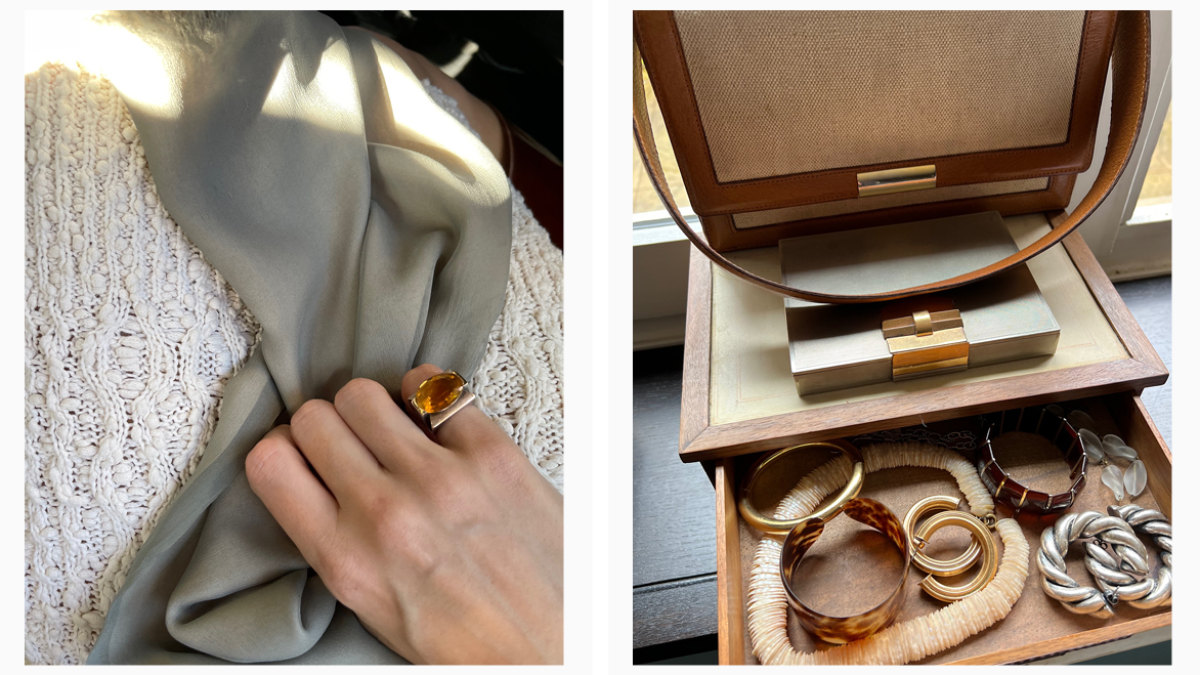
Why are you drawn to vintage?
For me, in recent years nobody has made something better or that matches my style more. This is why I’m not a furniture designer and just an interior designer. If I had an idea for something that looked better, I would grow and create new things, but I don’t think anyone has done better — or could do better.
What’s your process for finding pieces?
I go to a lot of auctions and galleries, and, sometimes, if I know I’ll have a little bit of free time and want to enjoy my day, I go visit a vintage store and just wait to fall in love.
If I’m working for my clients, I make a moodboard. I select every piece at the same time so that all the pieces will work together and create a beautiful ensemble. My job is to create an artistic dialogue between the pieces I’m selecting, so I love to pick everything at the same time, but I don’t always apply the rule to myself because I want to fall in love with pieces over time — it’s more of an evolution and I’m building it.
I also collect vintage books. If I need a book that isn’t in print anymore, I just tell Stephane, my adorable seller at Librairie des Archives in Paris. He knows my aesthetic and the decades I prefer, so he lets me know as soon as he has something that matches my interests, like a catalog of Viennese furniture from the 20s. It’s nice to have the catalog because then you can identify a piece that’s not signed. I love to see all the models.
What do you collect now?
I mostly collect clothes and jewelry, especially Boivin jewelry from the 20s and 30s. The aesthetic of the 20s is really what I like. It’s clean, refined, and there’s always some originality, either in the choice of stone or the scale.
I don’t collect as much furniture because as soon as I see a very beautiful important piece I always offer it to my clients first. Usually, because I’m in love, I sell it so well that they end up buying it. Clients first, me second. That said, I started collecting a bit for myself five years ago when I got a space large enough for me to welcome beautiful pieces, like a Burlwood Art Deco cabinet and an Edward Wormley sofa I had been dreaming about for years.
I do collect silverware, ivory tableware (ivory is protected now, so I always make sure it’s original from the 20s and 30s), and anything with tassels, be it curtains or a 1970s Yves Saint Laurent bag or belt. I especially love tiny little boxes, which I arrange by color. You cannot put anything inside, but they actually take up a lot of space, but. Still, it’s so satisfying to have them. This is how you build a collection: you’re just attracted and don’t know why. You cannot help yourself. My friend told me that one day she will take my ashes and put them in tiny little boxes.
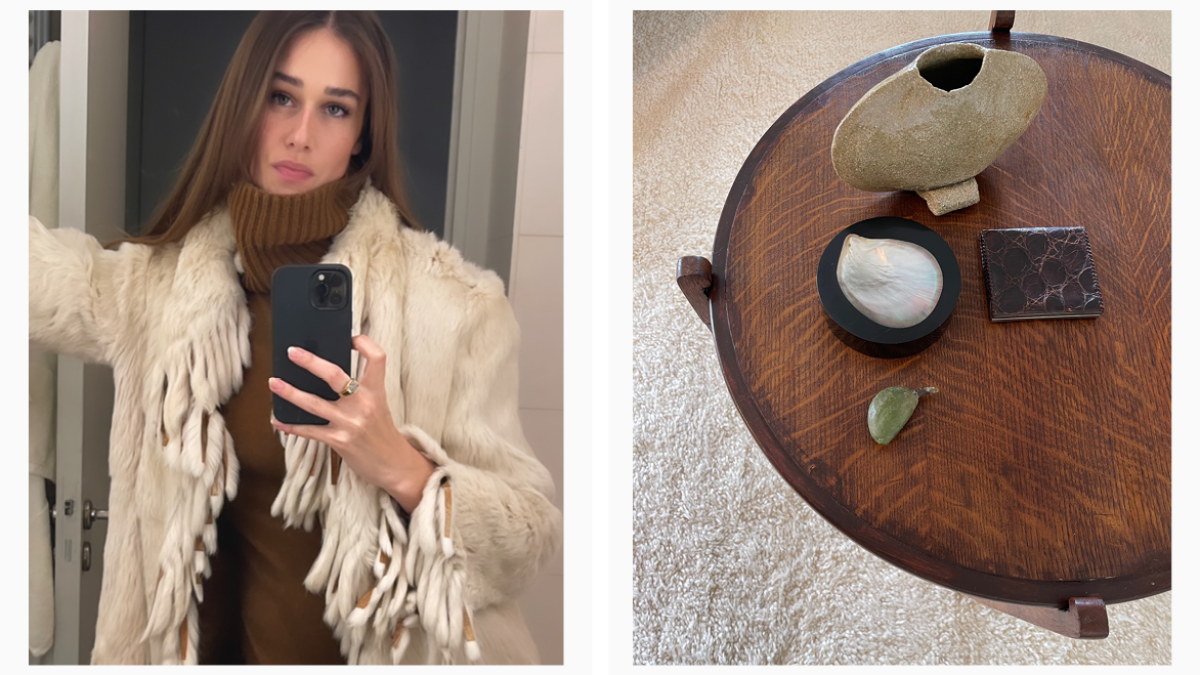
What rules for collecting do you have?
You have to make some rational choices. If you really want to be a proper collector, you have to take so many things into consideration, such as the rarity and the quality of the piece. To start a healthy collection, you need to make sure you’re not paying too much, so you have to pay attention to the provenance. It’s also interesting to know who owned the pieces before. You don’t buy them because of the advertising or marketing — you buy them because they have a history, so the original owner can also be part of why you like them. It’s beautiful to be able to know that. So my advice, isdon’t pay too much, check the rarity, know where it comes from, and fall in love. It’s nice to wait for a piece for 20 years. One day, it’ll come up at an auction and you’ll do anything to have it.
Greatest find?
A 1920s triptych floor mirror from Louis Sognot. It can also be used as a screen. I know I would never sell it. It’s so simple and perfect — it’s everything I’ve ever wanted. I found a black 32 centimeter Hermès Kelly from the same year that I was born, which I thought was super cute and emotional. It’s a very smooth, sleek leather and comes with a shoulder strap, which is great because I mostly wear crossbody bags. I love the option to wear it in a more relaxed way.
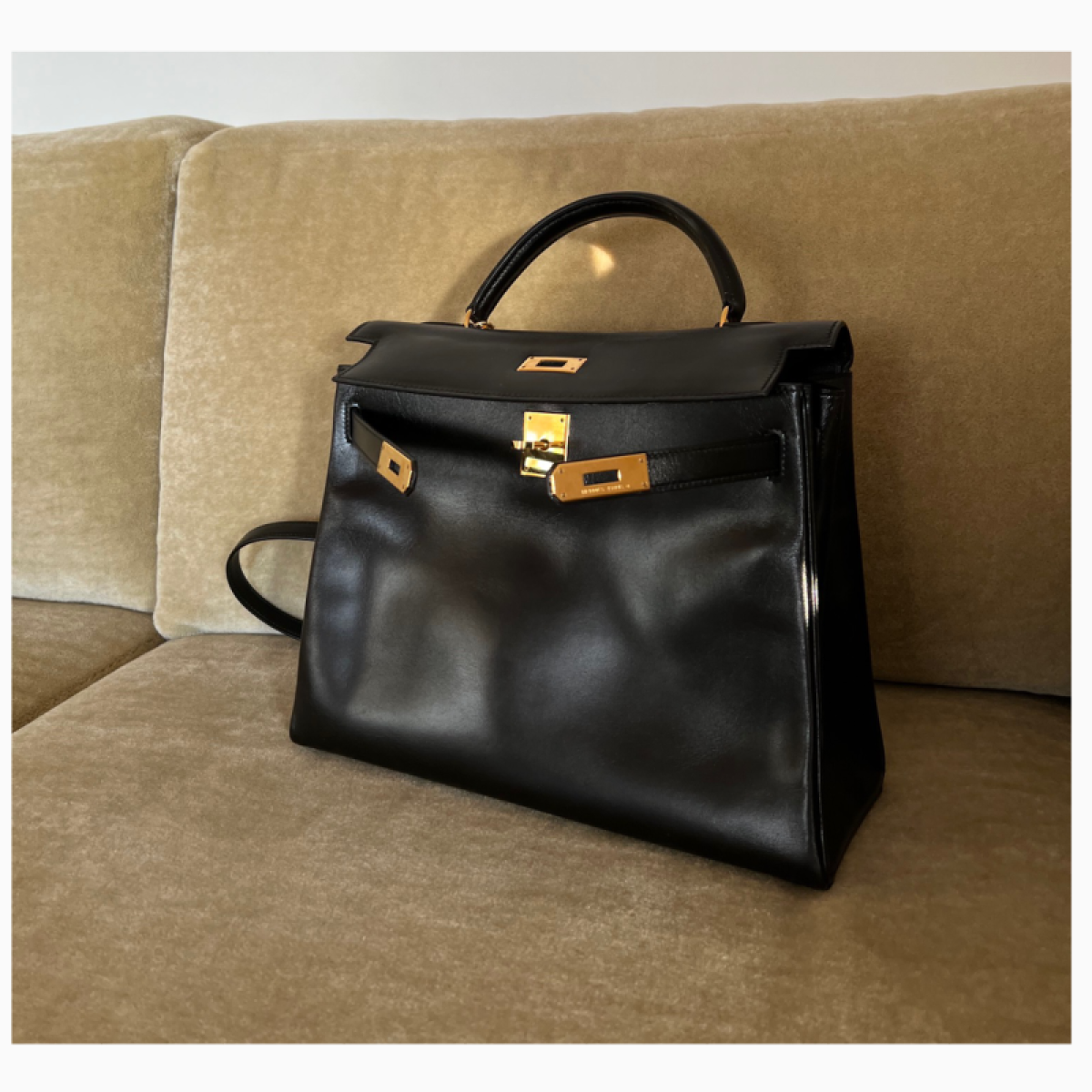
What’s your most recent purchase?
I spent a lot of money when I was in Los Angeles a few months ago. I bought a Jean Luce glass tray from the 30s, a lot of 70s skirt and blouse ensembles and some nice vintage glasses, which are very 70s, very Monica Vitti. I had been searching for this style for a very long time.
What’s the piece that got away?
Oh my god, so many you have no idea. There’s a piece I’ll regret all my life. Every time I see a photo I’m like why, why didn’t I buy it?
What’s still on your wishlist?
In terms of clothes, I want to invest in beautiful menswear-inspired costumes from the 80s and 90s, like strapped navy suits, for example. It’s very working girl in New York. I’m searching for a lot of Alaïa pieces, and I would love to collect Hermès by Margiela and Jean Paul Gaultier from the 90s and early 2000s.
With interiors I’m always looking for Otto Prutscher. He’s Viennese and designed amazing, beautiful glasses. I want some very particular ones — they’re fully transparent — so I’m always on the hunt for those because I love glassware and crystals. I’m also searching for a beautiful piece by Jean Boris Lacroix — I want a table lamp or a beautiful ashtray — but I haven’t fallen in love yet.
as told to Zoe Ruffner
At ReSee, every one of our vintage pieces comes with a story. This is, in large part, thanks to our unmatched community of consignors.
Though parting with such sartorial treasures may not be easy, the exceptional personal care we put into ensuring that they will go on to live a second (or, sometimes even, a third, fourth, or fifth) life offers a thrill — one rivaled only by that of the besotted shopper who adds them to her wardrobe.
Sell with us